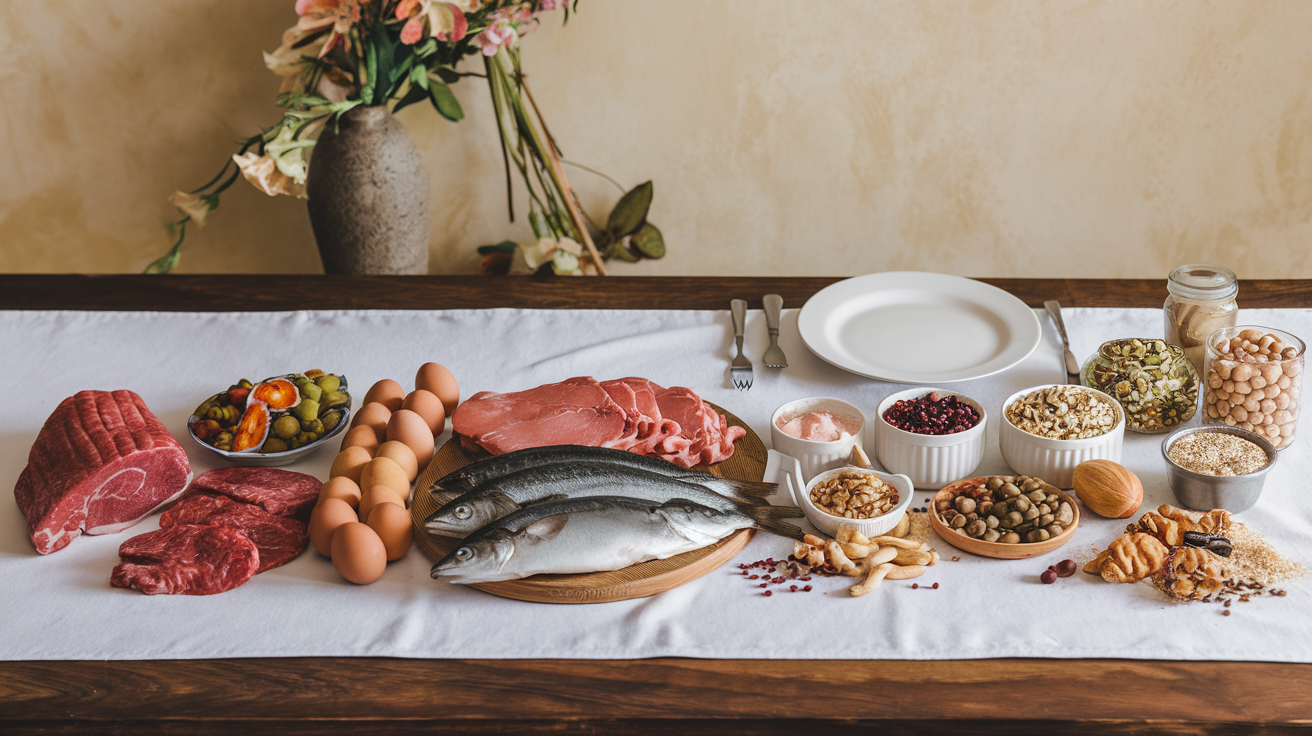Getting enough protein is crucial for muscle building, weight management, and overall health. Many people aim to consume 100 grams of protein daily, but this can be challenging without proper planning. Eating 100 grams of protein per day is achievable by including high-protein foods in every meal and snack.
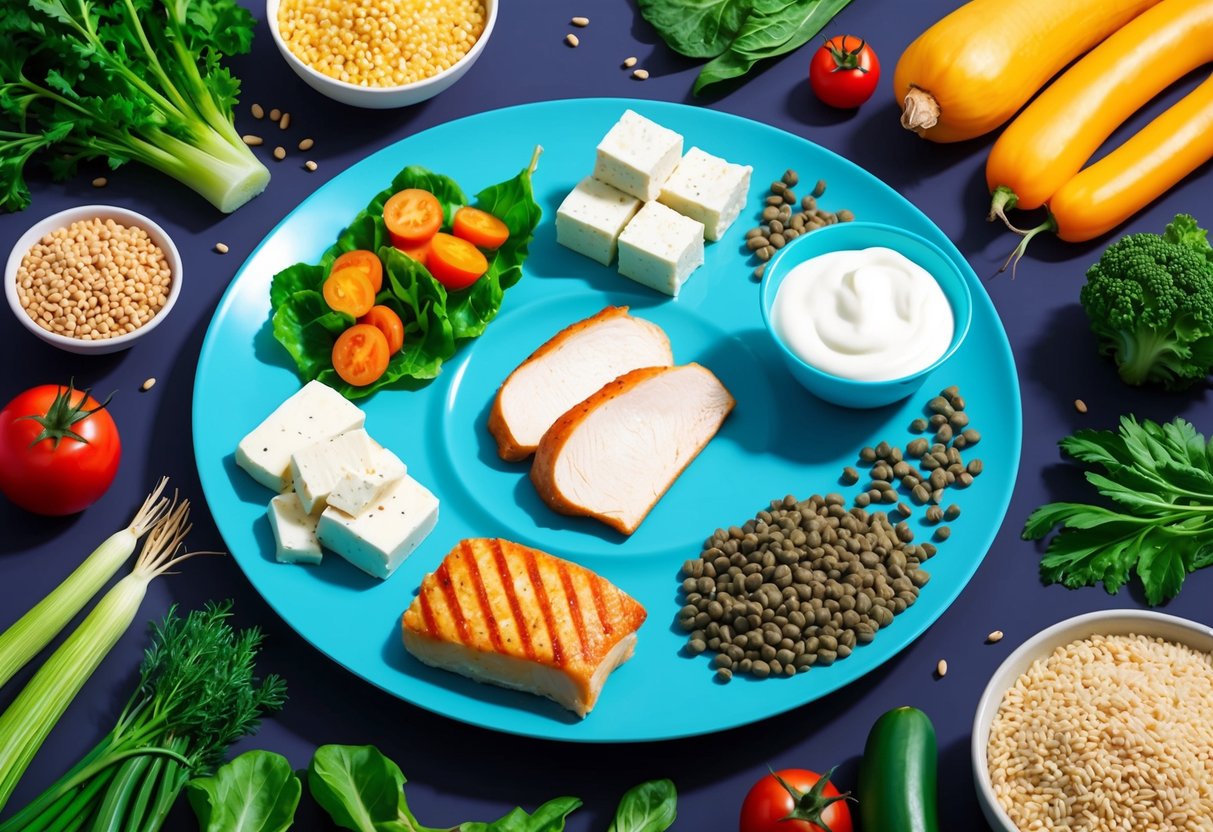
A balanced approach involves selecting lean meats, fish, eggs, dairy, legumes, and plant-based protein sources. Spreading protein intake throughout the day helps maintain steady energy levels and supports muscle recovery. Adding protein powder or Greek yogurt to smoothies can boost protein content easily.
Meal planning is key to reaching protein goals. Breakfast options like protein oatmeal can provide a strong start. Lunch and dinner should feature protein-rich main dishes. Snacks such as hard-boiled eggs or cottage cheese help fill gaps between meals.
Key Takeaways
- Include protein-rich foods in every meal and snack
- Spread protein intake evenly throughout the day
- Plan meals in advance to meet daily protein goals
Amazon Affiliate Disclaimer
We participate in the Amazon Services LLC Associates Program, an affiliate marketing program that allows us to earn fees by linking to Amazon.com and its affiliated sites. If you click on an Amazon affiliate link on our site and make a purchase, we may receive a small commission at no additional cost to you.
Understanding Protein and Its Importance
Protein is an essential nutrient for the human body. It plays a key role in many vital functions.
Protein helps build and repair tissues. This is crucial for muscle growth and overall body composition.
The body uses protein to make enzymes and hormones. These control many processes in the body.
Protein boosts metabolism. It takes more energy to digest protein than other nutrients. This can aid in weight loss efforts.
Eating protein increases feelings of fullness. This can help control appetite and support weight management goals.
Protein is important for bone health. It helps maintain strong bones as people age.
The immune system also relies on protein. Adequate intake supports the body's defenses against illness.
Most adults need about 0.36 grams of protein per pound of body weight daily. Active people may need more.
Good protein sources include:
- Lean meats
- Fish
- Eggs
- Dairy products
- Beans
- Nuts
- Seeds
Spreading protein intake throughout the day is best. This helps the body use it most effectively.
Daily Protein Goals and Dietary Sources
Eating enough protein is crucial for health and fitness goals. The right amount depends on individual factors. Both animal and plant sources can provide adequate protein.
Calculating Your Protein Needs
Protein needs vary based on age, weight, and activity level. A common recommendation is 0.8 grams of protein per kilogram of body weight for sedentary adults. Active individuals may need 1.2-2.0 grams per kilogram.
To calculate needs, multiply weight in kilograms by the appropriate factor. For example, a 70 kg person would need 56-140 grams daily.
Protein intake should be spread throughout the day. Aiming for 20-30 grams per meal helps maximize muscle building and repair.
Animal-Based Protein Sources
Animal foods are complete proteins with all essential amino acids. They're highly bioavailable, meaning the body can use them efficiently.
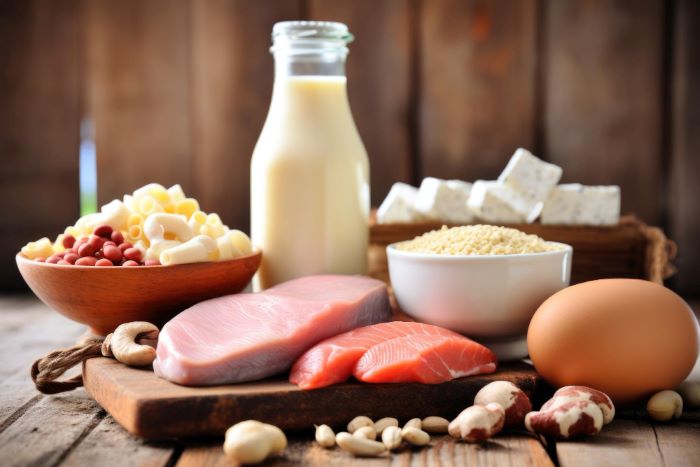
Top animal protein sources include:
- Lean meats: chicken breast, turkey, lean beef
- Fish: salmon, tuna, tilapia
- Eggs: whole eggs or egg whites
- Dairy: Greek yogurt, cottage cheese, milk
A 3 oz serving of chicken breast provides about 26 grams of protein. Greek yogurt offers 15-20 grams per 6 oz serving.
Plant-Based Protein Sources
Plant proteins can meet protein needs when eaten in variety. Some top options are:
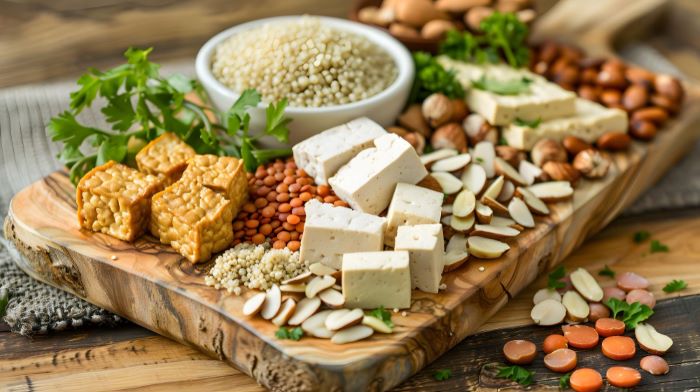
- Legumes: lentils, beans, chickpeas
- Soy products: tofu, tempeh, edamame
- Nuts and seeds: almonds, pumpkin seeds, chia seeds
- Whole grains: quinoa, oats, wheat
A cup of cooked lentils has 18 grams of protein. Tofu provides about 10 grams per 1⁄2 cup serving.
Combining different plant proteins helps ensure all amino acids are obtained. Pairing legumes with grains or nuts is an effective strategy.
Crafting a High-Protein Meal Plan
A well-structured meal plan is key to reaching 100 grams of protein daily. Spreading protein intake across meals and snacks helps maintain steady energy levels and supports muscle health.
Incorporating Protein in Every Meal
A balanced protein meal plan should include protein sources at each meal. Aim for 25-35 grams of protein per main meal.
Breakfast options:
- Greek yogurt with berries and nuts
- Eggs with whole grain toast and avocado
- Protein smoothie with spinach and banana
Lunch ideas:
- Grilled chicken salad with mixed greens
- Turkey and cheese sandwich on whole wheat bread
- Tuna wrap with vegetables
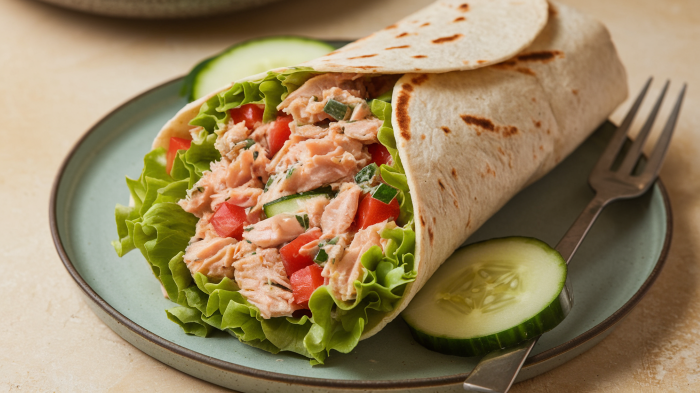
Dinner suggestions:
- Baked salmon with quinoa and roasted vegetables
- Lean beef stir-fry with brown rice
- Tofu and vegetable curry
High-Protein Recipes for Main Meals
Preparing protein-rich meals at home allows for better control over ingredients and portions. Here are some easy recipes:
One-Pan Chicken and Vegetables
- 4 oz chicken breast
- 1 cup mixed vegetables
- 1 tbsp olive oil
- Herbs and spices to taste
Greek Yogurt Parfait
- 1 cup Greek yogurt
- 1/4 cup granola
- 1/2 cup mixed berries
- 1 tbsp honey
Lentil and Vegetable Soup
- 1 cup cooked lentils
- 2 cups mixed vegetables
- 4 cups vegetable broth
- Spices to taste
These recipes provide a good balance of protein, carbs, and healthy fats.
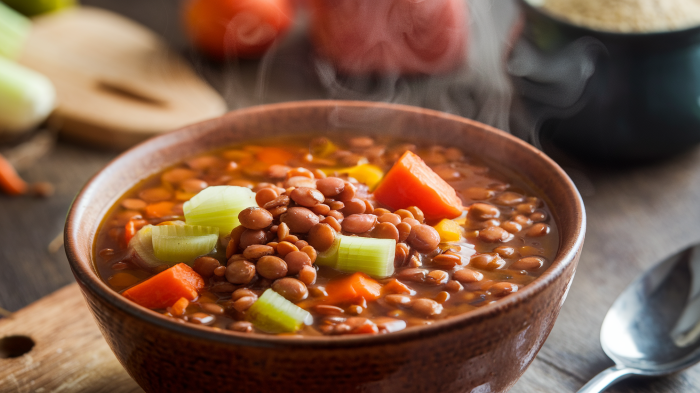
Protein Snacks and Shakes
Protein snacks help fill gaps between meals and boost daily protein intake. Some options include:
- Hard-boiled eggs
- Greek yogurt with fruit
- Handful of nuts and seeds
- Protein bars (look for options with at least 10g of protein)
- Beef jerky
- Cottage cheese with berries
Protein shakes are a convenient way to increase protein intake. A basic recipe:
- 1 scoop protein powder
- 1 cup milk (dairy or plant-based)
- 1/2 banana
- Ice cubes
Blend ingredients for a quick and easy protein boost. Protein supplements can be helpful for those struggling to meet their protein goals through whole foods alone.
Table of top 15 protein-rich foods
Protein is essential for building muscle, supporting the immune system, and boosting metabolism. Here's a table of 15 protein-rich foods to help you reach your daily protein goals:
| Food | Protein (g) per 100g |
|---|---|
| Whey protein isolate | 90.9 |
| Chicken breast | 31.0 |
| Tuna, canned | 26.8 |
| Greek yogurt | 10.0 |
| Eggs | 12.6 |
| Almonds | 21.2 |
| Lean beef | 26.1 |
| Cottage cheese | 11.1 |
| Lentils, cooked | 9.0 |
| Salmon | 22.0 |
| Peanut butter | 25.0 |
| Turkey breast | 29.0 |
| Tofu | 8.0 |
| Quinoa, cooked | 4.4 |
| Navy beans, cooked | 8.2 |
These foods offer a variety of options for increasing protein intake. They can be incorporated into meals and snacks throughout the day to help meet daily protein requirements.
Optimizing Protein Intake for Specific Needs
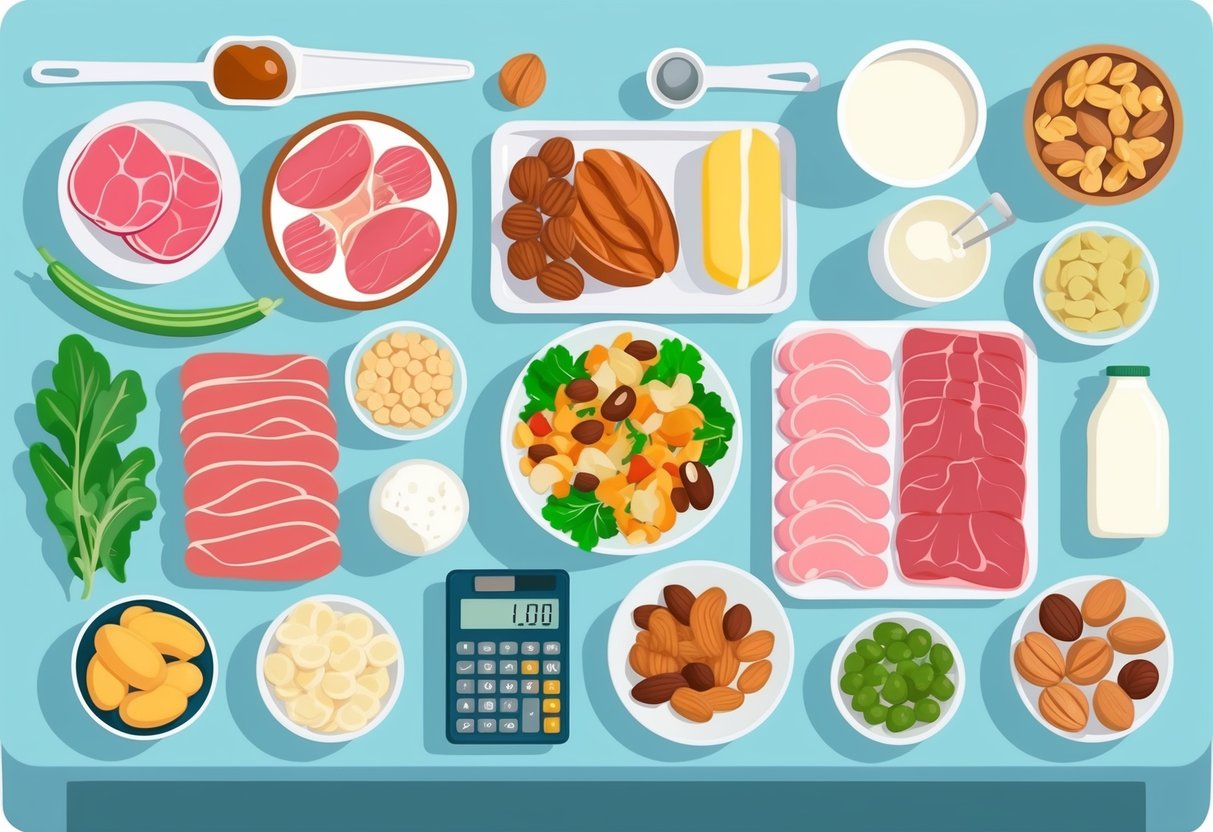
Protein needs vary based on individual factors and goals. Different groups have unique requirements for optimal health and performance.
Weight Loss and Fat Loss
A higher protein diet can aid weight loss and fat loss. Protein helps preserve muscle mass during calorie restriction. It also increases feelings of fullness.
For weight loss, aim for 1.2-1.6 grams of protein per kilogram of body weight daily. This supports muscle retention and reduces hunger.
Spread protein intake evenly across meals. Include a protein source with each meal and snack. Good options:
- Lean meats
- Fish
- Eggs
- Greek yogurt
- Cottage cheese
- Legumes
Track food intake to ensure you meet protein goals. Adjust portions of other foods to stay within calorie targets for weight loss.
Athletes and Active Individuals
Active people need more protein than sedentary individuals. Extra protein supports muscle repair, recovery, and growth.
Recommended protein intake for athletes:
- Endurance: 1.2-1.4 g/kg body weight
- Strength: 1.6-2.0 g/kg body weight
Timing matters. Consume protein within 30 minutes after exercise to maximize muscle protein synthesis. Include protein in pre-workout meals too.
Quality protein sources for athletes:
- Whey protein
- Lean meats
- Fish
- Eggs
- Milk
Spread intake across the day. Aim for 20-40 grams of protein per meal and snack.
Vegetarians and Vegans
Plant-based diets can meet protein needs with careful planning. Combine different plant proteins to get all essential amino acids.
Good plant protein sources:
- Legumes
- Nuts and seeds
- Whole grains
- Soy products
Aim for variety. Mix different plant proteins at each meal. This ensures a complete amino acid profile.
Vegetarians and vegans may need more total protein. Plant proteins are less bioavailable than animal proteins. Consider a 10% increase in protein goals.
Supplements like peas or rice protein can help meet needs. B12 supplements are crucial for vegans.
Older Adults and Bone Health
Protein needs increase with age. Higher intake helps maintain muscle mass and bone density.
Aim for 1.0-1.2 grams of protein per kilogram of body weight daily. This is higher than the recommendations for younger adults.
Include protein at every meal. Focus on easily digestible sources:
- Eggs
- Greek yogurt
- Cottage cheese
- Fish
- Lean meats
Pair protein with calcium-rich foods for bone health. Examples:
- Yogurt with almonds
- Sardines on whole grain toast
- Tofu stir-fry with broccoli
Consider leucine-rich foods or supplements. Leucine helps stimulate muscle protein synthesis in older adults.
Practical Tips and Considerations
Eating 100 grams of protein daily requires planning and smart food choices. These tips can help you reach your protein goals while maintaining a balanced diet.
Portion Sizes and Frequency
Divide protein intake across meals and snacks. Aim for 20-30 grams per meal, with smaller amounts in snacks. This helps the body use protein more efficiently.
Use a food scale to measure portions accurately. A palm-sized serving of meat or fish is about 3-4 ounces, providing 20-25 grams of protein.
Spread protein intake throughout the day. Eating protein at each meal helps maintain muscle and keeps you feeling full.
For sedentary individuals, smaller portions may be enough. Active people might need larger servings to meet their protein needs.
Balanced Diet and Healthy Fats
Include a variety of protein sources. Mix animal and plant-based proteins for a well-rounded nutrient profile.
Don't forget healthy fats. Avocados, nuts, and olive oil complement protein-rich foods and boost overall nutrition.
Pair proteins with complex carbs. This combo provides sustained energy and helps with muscle recovery.
Choose nutrient-dense foods. Opt for lean meats, fish, eggs, legumes, and low-fat dairy to increase protein without excess calories.
Dealing with Cravings and Satiety
High-protein foods help control hunger. They take longer to digest, keeping you fuller for longer periods.
Plan protein-rich snacks. Keep hard-boiled eggs, Greek yogurt, or protein bars handy for quick bites.
Drink water between meals. Sometimes, thirst is mistaken for hunger. Staying hydrated can help manage cravings.
If cravings persist, try a small portion of the desired food alongside a protein source. This can satisfy the craving while keeping you on track with protein goals.
A nutrition coach can help create a personalized plan. They can suggest ways to increase protein intake that fit individual preferences and lifestyles.
Frequently Asked Questions
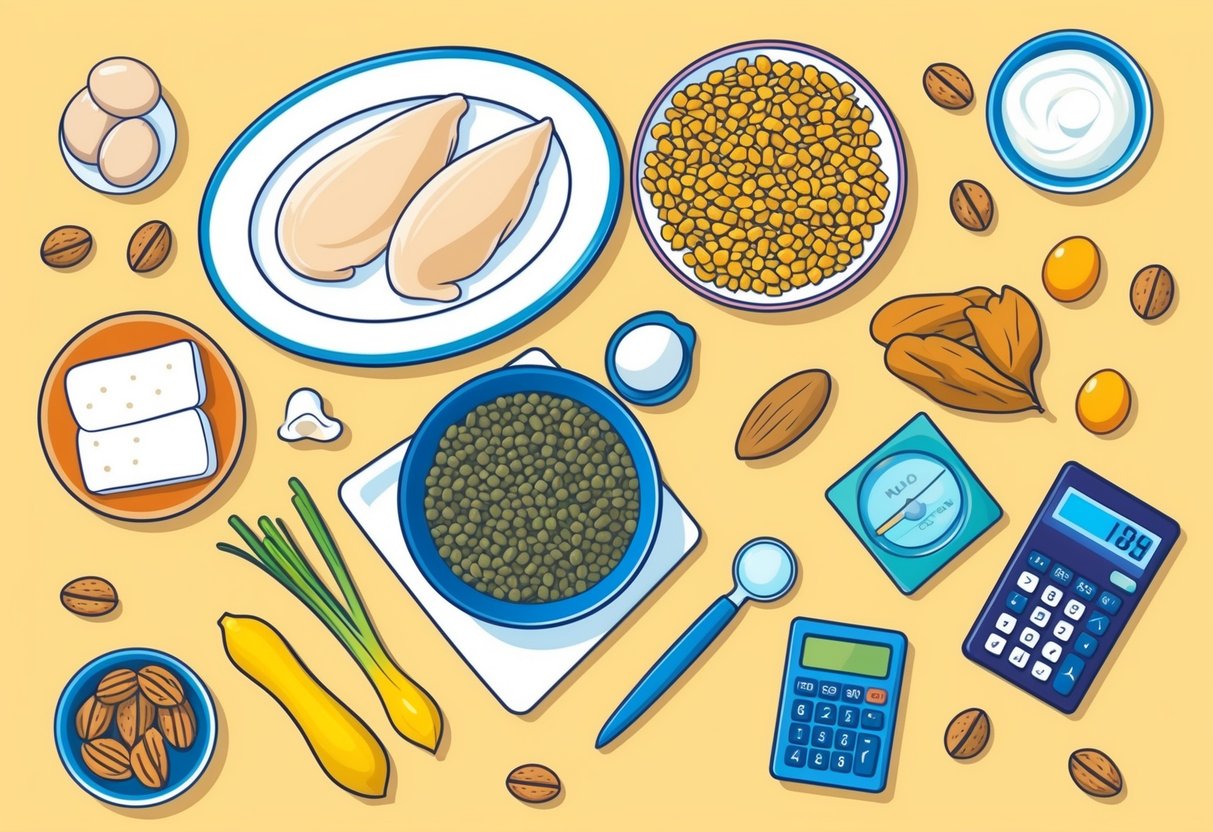
Getting enough protein can be challenging. These questions address common concerns about reaching 100 grams of protein daily for different diets and goals.
What are the best vegetarian sources to consume 100 grams of protein daily?
Vegetarians can reach 100 grams of protein by eating eggs, Greek yogurt, cottage cheese, and legumes. Tofu, tempeh, and seitan are excellent plant-based protein sources. Quinoa, nuts, and seeds also contribute protein to a vegetarian diet.
Combining different plant proteins throughout the day ensures a complete amino acid profile. Protein powders made from pea, hemp, or rice can supplement meals if needed.
How can one incorporate 100 grams of protein into their diet for effective weight loss?
For weight loss, spread protein intake across meals to boost metabolism and reduce cravings. Include lean meats, fish, eggs, and low-fat dairy products.
Add protein-rich snacks like Greek yogurt or hard-boiled eggs between meals. Choose high-protein, low-calorie options to stay within daily calorie goals while meeting protein needs.
What dietary plans support building muscle with a daily intake of 100 grams of protein?
Muscle-building diets focus on lean proteins and complex carbs. Eat 1 gram of protein per pound of body weight. Include chicken breast, lean beef, fish, and egg whites in meals.
Add protein shakes after workouts for quick muscle recovery. Consume protein-rich snacks like Greek yogurt or cottage cheese before bed to support overnight muscle repair.
What strategies can be adopted to naturally increase protein intake without the use of supplements?
Increase portion sizes of protein-rich foods at each meal. Add eggs or egg whites to breakfast. Include lean meats or fish with lunch and dinner.
Snack on nuts, seeds, or low-fat cheese between meals. Use Greek yogurt in smoothies or as a topping for fruits and vegetables. Replace grains with higher-protein alternatives like quinoa.
Which high-protein foods should one eat to consume 100 grams of protein in one meal?
A large portion of lean meat or fish can provide most of the protein. Chicken breast, lean beef, or salmon are good options. Pair with egg whites or a protein shake.
Add high-protein sides like Greek yogurt, cottage cheese, or beans. Include nuts or seeds for additional protein. This combination can help reach 100 grams in a single meal.
Is consuming 100 grams of protein on a daily basis considered excessive for women?
For most women, 100 grams of protein daily is not excessive. Active women or those trying to build muscle may benefit from this amount. The exact needs depend on body weight and activity level.
Women who exercise regularly might aim for 0.6 - 0.9 grams of protein per pound of body weight. Always consult a healthcare provider or nutritionist for personalized advice.


